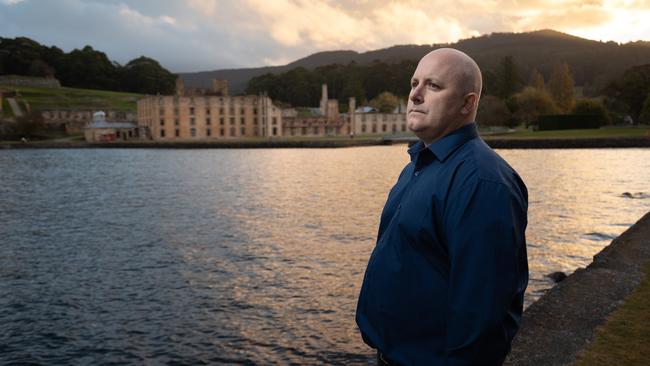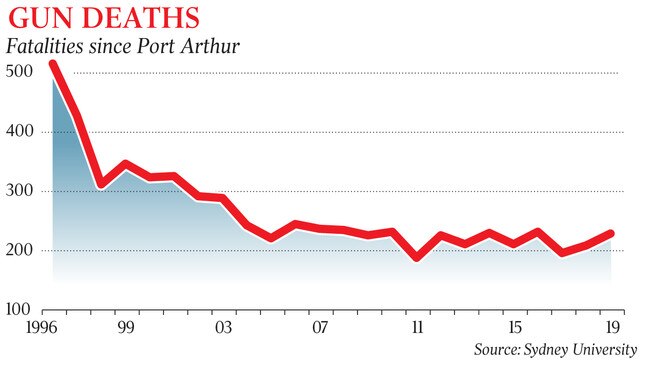Port Arthur’s legacy of lives saved, 25 years on
Twenty-five years after the Port Arthur massacre, the number of gun owners and gun deaths has fallen dramatically, amid claims that states are eroding the landmark laws.

Twenty-five years after the Port Arthur massacre, which triggered national firearm controls, the number of gun owners and gun deaths has fallen dramatically, amid claims that states are eroding the landmark laws.
Wednesday marks a quarter of a century to the day since Martin Bryant’s shooting spree on the Tasman Peninsula left 35 people dead and 18 wounded, shaking Australia from its gun culture complacency.
The National Firearms Agreement, brokered by then-prime minister John Howard with the states in the massacre’s wake, curtailed semi-automatic rifles and imposed cooling off periods and other safeguards.
New research released on Tuesday suggests the NFA has worked and is still protecting Australians from the worst excesses of firearm misuse, despite claims of ongoing gaps.
University of Sydney data shows the proportion of Australians who hold a gun licence has fallen by 48 per cent since 1997, while the proportion of households with guns has fallen 75 per cent.
Deaths from firearms are down from 2.84 per 100,000 people in 1996 to 0.9 per 100,000 in 2019.
“In the wake of John Howard’s gun reforms, the risk of an Australian dying by gunshot quickly fell by more than half and it’s stayed that low for 25 years,” said associate professor Philip Alpers, from the university’s School of Public Health.
“In those same years, there’s also been a significant shift in the country’s gun culture.”
Gun control advocates say, however, that multiple states have since eroded elements of the NFA, such as 28-day cooling off periods for all new guns.
As well, the NFA’s push for a national register of firearms has not been delivered.
“There has been a chipping away around the edges of the NFA, and some aspects of it were never implemented,” said Gun Control Australia spokesman Roland Browne.
“We also need to tighten up the NFA, with a ban on semi-automatic handguns, which weren’t addressed … and to deal with changes to technology, including the Adler lever-action shotgun.”

A low-key service at the Port Arthur Historic Site on Wednesday will commemorate the dead. Tasman mayor Kelly Spaulding said while the region long ago recovered from the economic crisis that followed the tragedy, emotional scars ran deep.
“You never really recover fully, socially,” Mr Spaulding said.
“Those heavily affected relive it every time something comes up in the media.
“The anniversary is a sensitive time. I knew all those people who were from the local community who were shot on the day.”
He vividly recalls the fear and confusion of the events of April 28-29, 1996, having gone to the site with his mother to help provide food for emergency responders.
With few mobile phones in use, and landlines cut, there was uncertainty about what was unfolding.
“We were evacuated later on because they thought the gunman was loose again,” he said. “It was a scary time.”
Historic site co-chair, former premier Michael Field, said the tragedy would continue to be marked, respectfully.
“Anyone … touched by the event was profoundly affected,” he said. “And it profoundly affected the psyche of Tasmanians.”
The Alannah & Madeline Foundation, set up by Walter Mikac, who lost his wife and two daughters in the massacre, urged a focus be put on remembrance of lives lost.
“Each of the victims has families that still struggle with the memory of their lost loved ones,” said foundation chief executive Sarah Davies.
“Out of respect for all these people, we hope the media will focus on the victims and survivors and not give any space to the shooter or those that seek to gain notoriety through association.”
Bryant, who pleaded guilty, is serving 35 life terms in Hobart’s Risdon Prison.



